PORTLAND — The jig was up, and dinner had barely begun.
As the bowl of creamed greens circled the table, dinner guest Atsuko Fujimoto quickly ferreted out that they weren’t collard greens at all.
“Is this kombu (seaweed)?” she asked, looking directly at me.
Worse, she proceeded to regale the table with the tale of her friend who once ate too much seaweed in one sitting and ended up in the emergency room.
Awkward pause.
I had not told my guests – Ten Ten Pié chef/co-owner Fujimoto, two 16-year-old boys, a neighbor and a stranger who’d volunteered on Facebook to join us – that I’d invited them to dinner expressly to feed them seaweed. Seaweed from first course to last. (Two co-workers were also at the dinner and were in on the secret.)
I’d been reading a steady stream of articles about seaweed as food, and the narrative usually went like this: Seaweed is good for us. Growing and harvesting seaweed is good for the ocean and the coastline. Seaweed is the next kale. Seaweed is the next miracle food. There’s just one hitch, these stories agreed. It doesn’t taste very good, and – discounting sushi – the job of persuading ordinary Americans to eat it will be a challenge. As seaweed farmer Bren Smith told The New Yorker last November, “We’re picking one of the toughest food types to convince Americans to eat.”
So when a cookbook on the subject written by South Freeport resident, ocean champion and chef Barton Seaver came out in January, I decided to take that challenge. If I cooked it, would they come?
Seaver’s “Superfood Seagreens: A Guide to Cooking with Power-Packed Seaweed” (his sixth book in just five years) isn’t aimed at eaters on the edge – at the trendsetters who need to be the first to taste anything and the first to tell you/tweet/Instagram that they have. It’s a paperback book, and the typeface, layout, mostly black and white photos, $14.75 price tag, even the recipes seem aimed squarely at the casserole-and-crockpot set. I let that guide my menu selection for the dinner, too, landing on an unthreatening American meal of salad, lasagna, greens, tea and chocolate cake. Each and every dish, cake included, contained seaweed.
KITCHEN PREP
Before dinner came shopping and cooking, which were harder chores than I had expected. Press Herald food writer Meredith Goad and I tag-teamed. Both of us are experienced cooks, and I had lived in Japan for two years, so am more familiar with seaweed than most Americans. (Incidentally, Seaver argues for changing the name to “seagreens” as a way to “reinvent our relationship with this long-neglected resource. By calling them seagreens,” he writes, “we create a familiar association with them as food and embrace them as a culinary opportunity.”)
Although chapter five of “Superfood Seagreens” gives advice on buying and preparing seagreens, both Meredith and I found we needed far more hand-holding than the recipes offered. The chocolate cake called for “2 cups finely minced seagreens, fresh, frozen or rehydrated.” I had no idea how much to rehydrate to get that amount. The lasagna asked for rehydrated kelp cut into strips. But how wide? I hazarded a guess. The dish was one of the hits of the dinner; still, my tasters thought I should have cut the strips thinner. And the photo for the Arugula, Mint, Apple and Seagreens Salad showed mere bits of kelp and julienned apples, but the recipe called for bite-size kelp pieces and thinly sliced apples.
These things were confusing.
Seaweed cookery, at least in the United States, is so very new. I can think of only a handful of cookbooks on the subject. It may take time before we work it out – it’ll certainly take time before I do – and “Superfood Seagreens” offers plenty of useful material on nutrients, farming, varieties and resources. Still, had I been Seaver’s editor, I would have nixed the chapter on “Equipping Your Kitchen and Pantry” (Does any home cook need to be told to stock his kitchen with a cutting board, spatulas and lemons?) and instructed Seaver to focus on meticulously guiding his readers, who in all likelihood have never cooked with seaweed before, let alone shopped for it or perhaps tasted it.
At 10 p.m. the night before the dinner, I was in my kitchen surrounded by pots and bowls of rehydrating seaweed. Minced seaweed for the chocolate cake formed a mound on the cutting board (“more murk and mush than mince,” my notes say). I heard the telltale ring of an email coming through. It was Meredith, also at home cooking. “Not sure seagreens are going to be a regular part of my diet, unless they’re flakes,” she’d written. “Pee-you! LOL!!!”
In fairness, I liked the way the greens smelled in the packages, which I’d picked up at Whole Foods and Harbor Fish Market in Portland. Did you hold seashells to your ear as a child to hear the sound of the ocean? When I sniffed the bags of dried seaweed, I got a faint but unmistakable whiff of the sea.
AND THE VERDICT IS…
Once my guests knew they were eating seaweed, I worried they might not give the food a chance. Fujimoto would, I figured. I’d asked her because she is Japanese and grew up with seaweed as part of her diet. But the teenagers? My neighbor?
If my dinner is any indication, Americans are more than willing to open their hearts, minds and palates to seaweed. (And frankly, over the decades and centuries, we’ve grown to love tomatoes, garlic, spicy food, raw fish, Brussels sprouts, beets, cilantro, oxtails, bacon in chocolate… so really, why not seaweed? As a nation, we’re still working on lamb and bugs.)
If you’re keeping score, here’s what we thought of the meal:
We HATED the creamed seagreens. “It’s like leather. I’m just not into it,” MJ Crace said, and she was being polite. Teenager Jack O’Kelly, of Cape Elizabeth, described it as the “weakest link.”
We liked the lasagna. “A 10,” my neighbor Lorelle Courtois wrote in an email evaluating the food, adding that a little more meat wouldn’t have hurt anything. “Like it a lot.”
We loved the salad. “I was astonished by the salad, one of the best I have ever eaten,” teenager Jacob Jordan, also of Cape Elizabeth, wrote in tasting notes (He’s the son of Press Herald sports writer Glenn Jordan.) “The clash between the slices of apple and the seaweed was heavenly.”
We split on the chocolate cake. I hated it (and vigorously and vehemently disagreed with the recipe note: “Hey, it’s chocolate cake. Who cares if it has seagreens in it. Even the most finicky eater will dive into this one”). Others liked it and took extras home.
And we gave a thumbs up to the Wellness Tea – kombu steeped in water with maple syrup, lemon and cinnamon.
Excepting the tea, there wasn’t a dish we felt couldn’t be improved upon. “I would modify everything a little,” said Crace, an avid cook who caters on occasion and teaches cooking classes. Among the suggestions from the guests (many from Fujimoto) – lighten the creamed seagreens with other greens and add miso. Marinate the kelp in rice vinegar or soy or mirin (and cut it smaller) before tossing it with the salad. Puree the seaweed for the chocolate cake instead of mincing it – or maybe skip the seaweed altogether and add sea salt “if you want the taste of the sea,” Fujimoto said.
The important thing is we were engaged with this “true superfood,” as Seaver calls it. Minus the Creamed Seagreens, we happily ate the meal and some of us went for seconds. We talked about how we might tinker with the dishes in our own kitchens. Somebody asked for the salad recipe. None of us turned up our noses or pushed our plates away.
The recipes that follow are from “Superfood Seagreens: A Guide to Cooking with Power-Packed Seaweed” by Barton Seaver.
ARUGULA, MINT, APPLE AND SEAGREENS SALAD
Food editor Peggy Grodinsky used fewer seagreens than called for here, tossing in pieces until the salad looked balanced to her.
Serves 4
3 tablespoons olive oil
1 tablespoon red wine vinegar
1 tablespoon whole grain or Dijon mustard
Salt
1/2 pound arugula
1/2 pound fresh or frozen kelp cut into bite-size pieces, or 2 ounces rehydrated dried kelp
2 crisp apples, such as Fuji or Braeburn, very thinly sliced
10 sprigs mint, leaves only, julienned
Fresh cracked pepper
1. In a large bowl whisk together the olive oil, vinegar, mustard, and a good pinch of salt.
2. Add the arugula, seagreens, apple, and mint and toss until well-coated. Serve immediately with fresh cracked pepper.
WELLNESS TEA
Makes about 91/2 cups
2 quarts water
1 cup lemon juice
2 cinnamon sticks
1/2 cup maple syrup, or more or less to taste
1 palm-sized sheet of kombu
1 generous pinch cayenne
1. Bring all ingredients to a simmer and let steep for at least 20 minutes.
2. Strain and serve or keep warm until needed.
Send questions/comments to the editors.

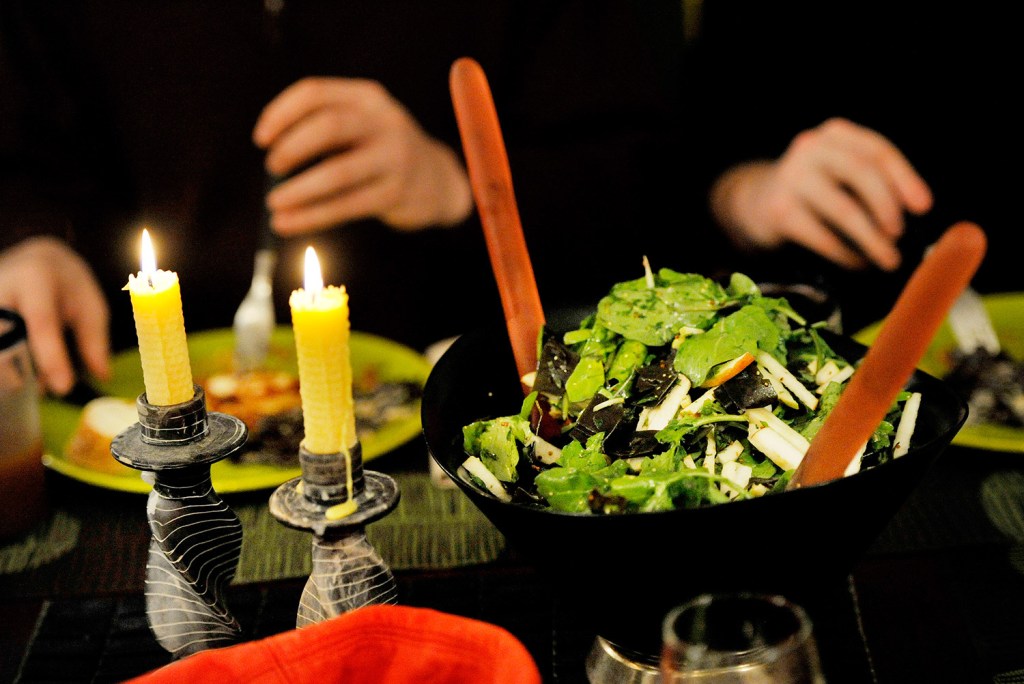
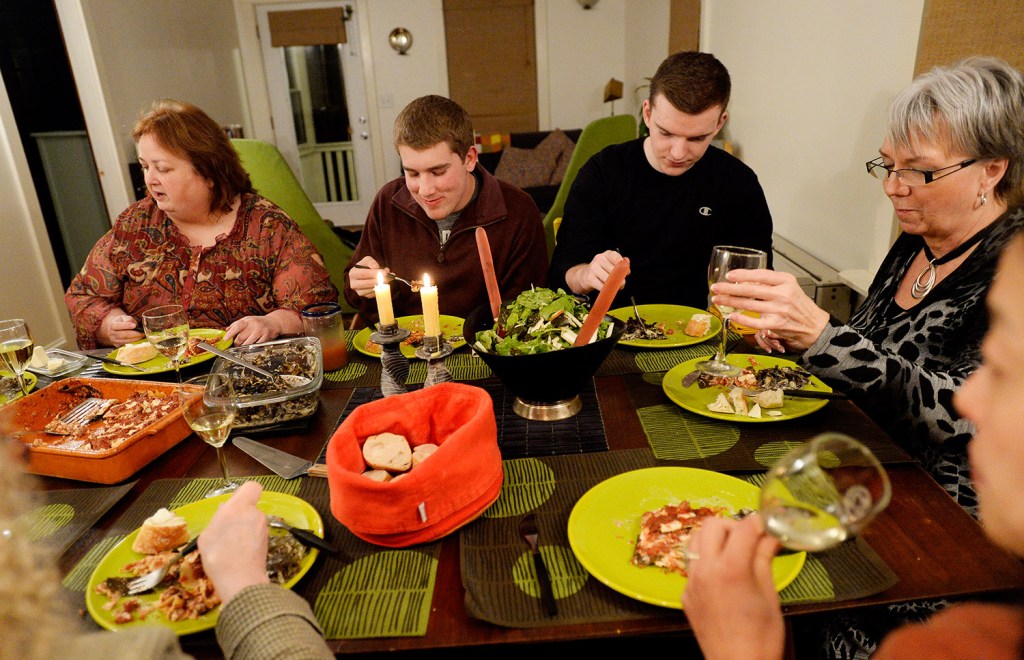
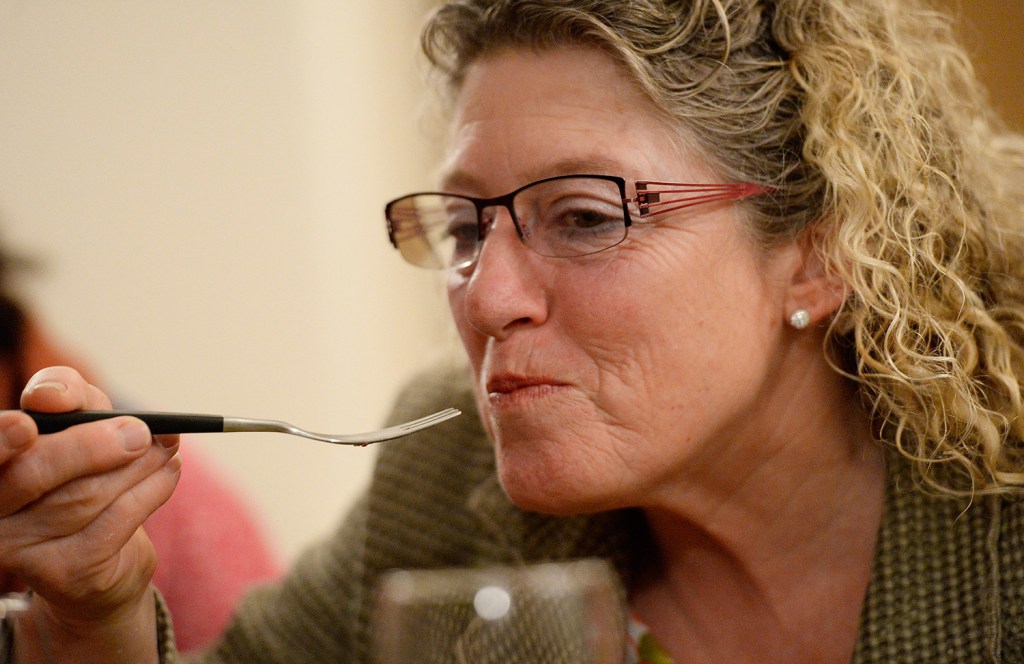
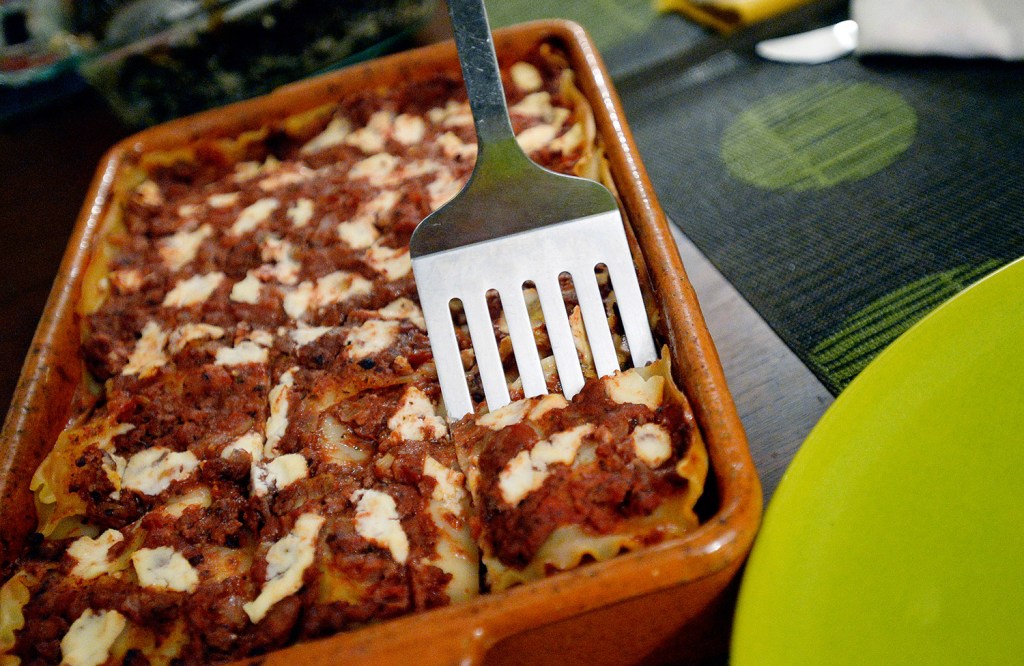
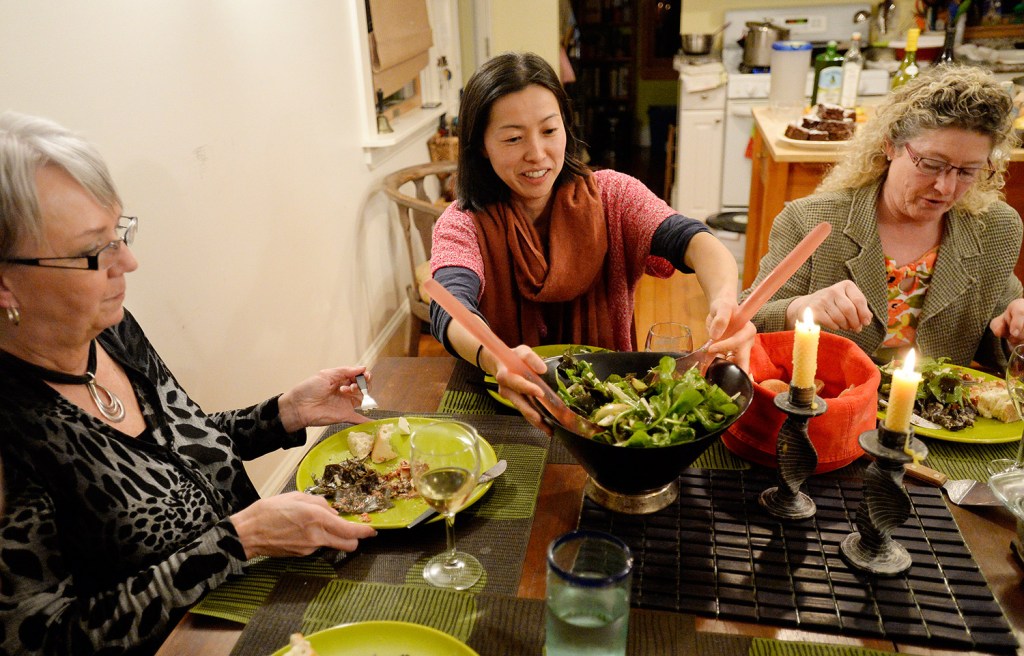
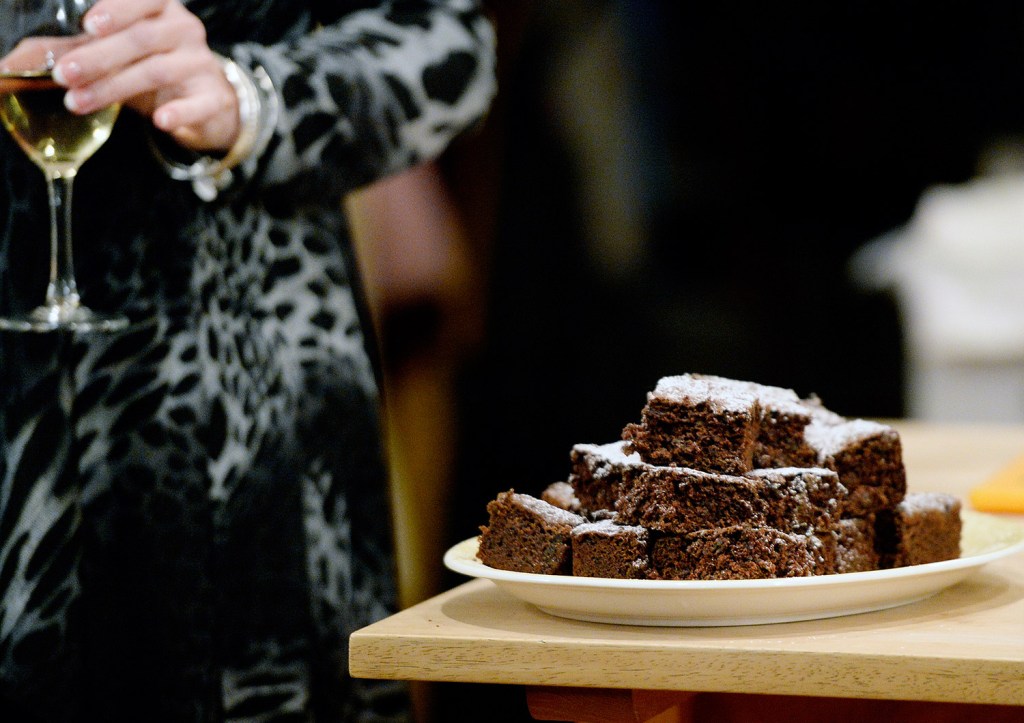
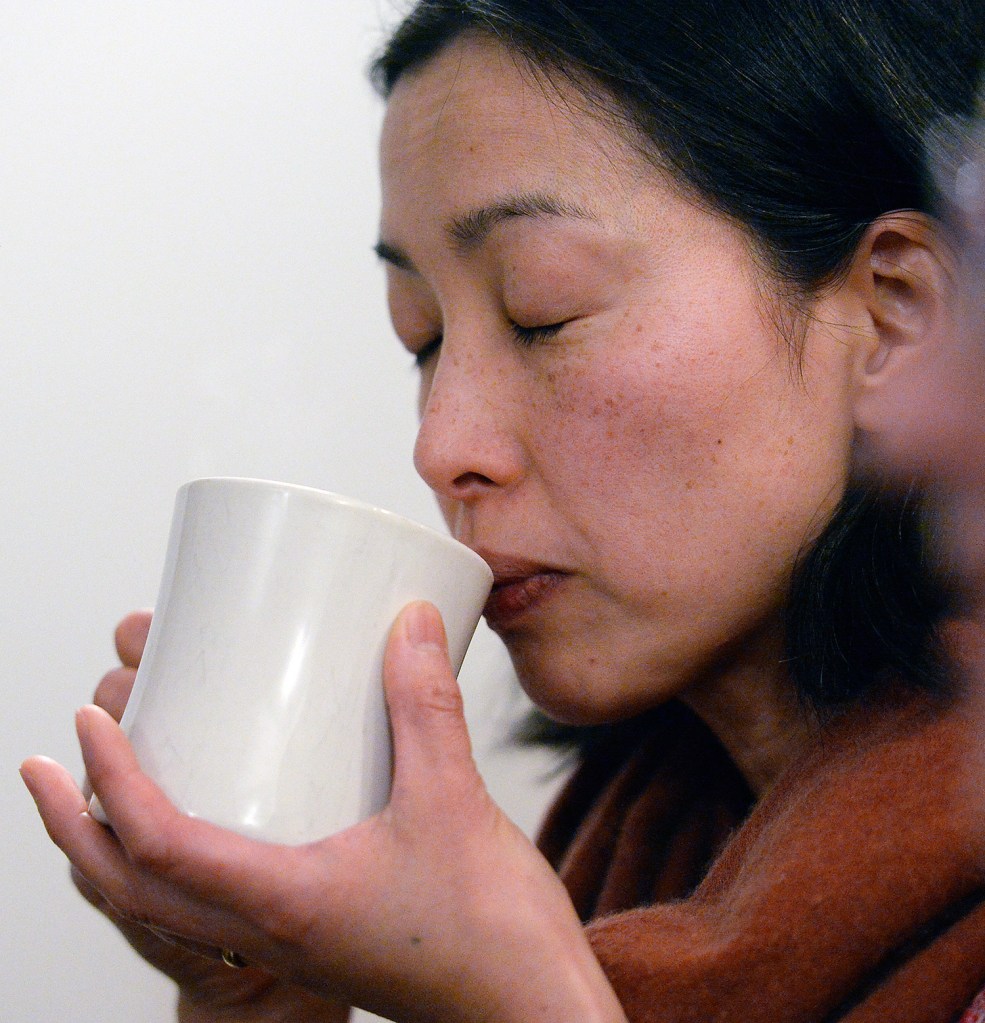

Success. Please wait for the page to reload. If the page does not reload within 5 seconds, please refresh the page.
Enter your email and password to access comments.
Hi, to comment on stories you must . This profile is in addition to your subscription and website login.
Already have a commenting profile? .
Invalid username/password.
Please check your email to confirm and complete your registration.
Only subscribers are eligible to post comments. Please subscribe or login first for digital access. Here’s why.
Use the form below to reset your password. When you've submitted your account email, we will send an email with a reset code.